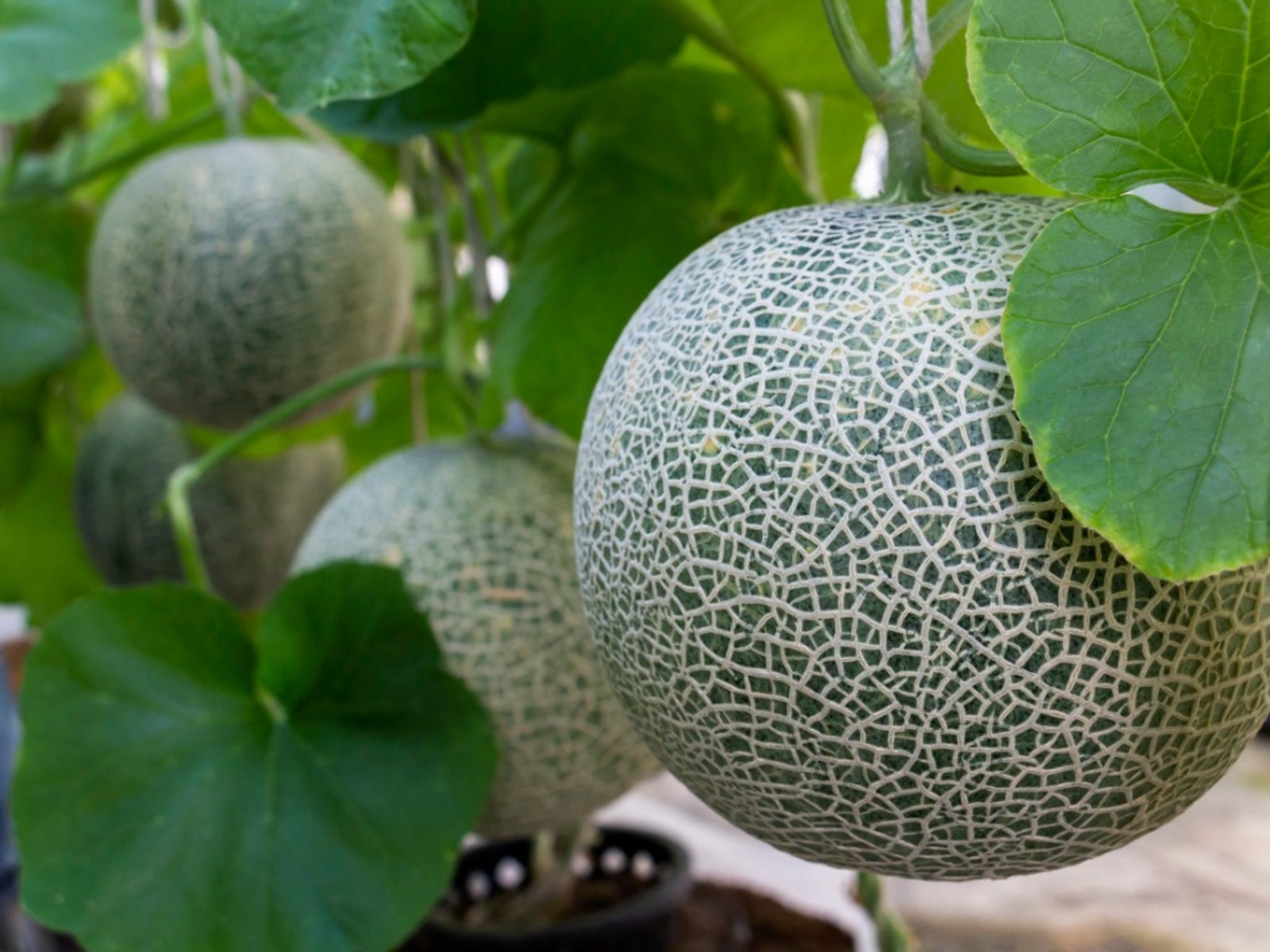Planting Cantaloupe - How To Grow Cantaloupe Melons


The cantaloupe plant, also known as muskmelon, is a popular melon that is commonly grown in many home gardens, as well as commercially. It is easily recognized by the net-like rind and sweet orange color inside. Cantaloupes are closely related to cucumbers, squash, and pumpkins, therefore, share similar growing conditions.
How to Grow Cantaloupe
Anyone growing cucurbits (squash, cucumber, pumpkin, etc.) can grow cantaloupes. When planting cantaloupe, wait until the threat of frost has passed and the soil has warmed in spring. You can either sow seeds directly in the garden or in flats inside (do this well before their initial planting outdoors), or you can use transplants purchased from reputable nurseries or garden centers. These plants need plenty of sun with warm, well-draining soil—preferably with pH levels between 6.0 and 6.5. Seeds are usually planted anywhere from ½ to 1 inch (1-2.5 cm.) deep, and in groups of three. Although not required, I like to plant them in small hills or mounds as I do with other cucurbit members. Cantaloupe plants are generally spaced about 2 feet (61 cm.) apart with rows 5 to 6 feet (1.5-2 m.) apart. Transplants can be set out once the temperatures have warmed and they've developed their second or third set of leaves. Purchased plants are normally ready for planting right away. These, too, should be spaced about 2 feet (61 cm.) apart. Note: You can also plant cantaloupes along a fence or allow the plants to climb a trellis or small stepladder. Just make sure to add something that will cradle the fruits as they grow—such as a sling made from pantyhose—or set the fruits on the steps of your ladder.
Caring for and Harvesting Cantaloupe Plant
Following the planting of cantaloupe plants, you'll need to water them thoroughly. They'll also require weekly watering of around 1 to 2 inches (2.5-5 cm.) worth, preferably through drip irrigation. Mulch is another factor to consider when growing cantaloupe. Mulch not only keeps the soil warm, which these plants enjoy, but it helps retain moisture, minimizes weed growth, and keeps fruit off the soil (of course, you can set them on small pieces of board too). While many people prefer to use plastic mulch when they grow cantaloupes, you can use straw as well. Within about a month or so after the fruit has set, cantaloupes should be ready for harvesting. A ripe cantaloupe will separate from the stem with ease. Therefore, if you're unsure about when to harvest, you can simply check the stem where your melon is attached and see if the cantaloupe comes off. If it doesn't, leave it a little longer but check often.
Sign up for the Gardening Know How newsletter today and receive a free copy of our e-book "How to Grow Delicious Tomatoes".

Nikki Tilley has been gardening for nearly three decades. The former Senior Editor and Archivist of Gardening Know How, Nikki has also authored six gardening books.